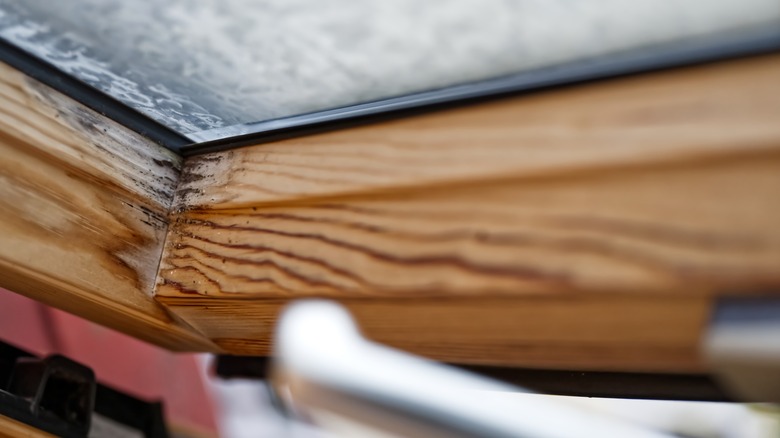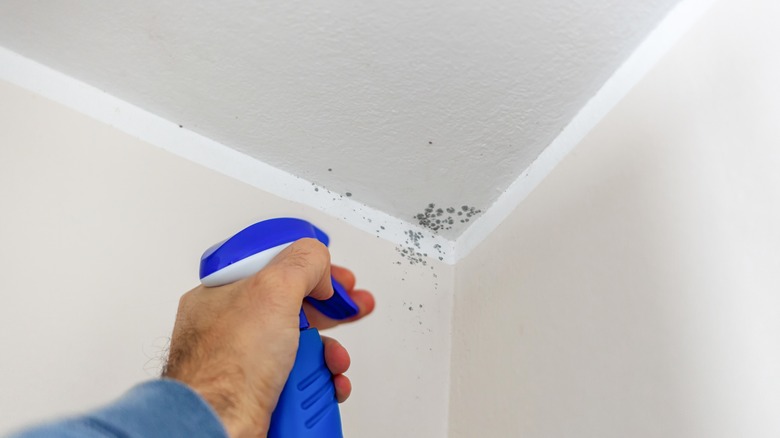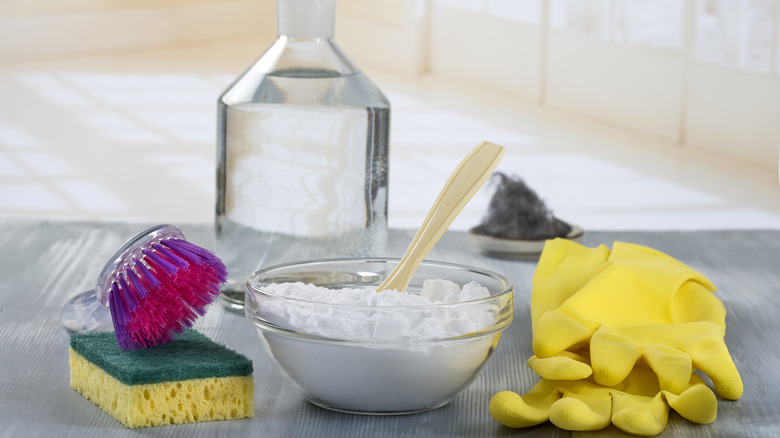Can You Banish Mold From Wood Using Vinegar & Other All-Natural Ingredients?
We may receive a commission on purchases made from links.
Mold can grow on almost any surface: paper, plastic, or even glass. However, since unfinished wood is porous, mold that grows on this kind of surface is often more challenging to deal with. Remember, mold thrives in moist environments and requires moisture to grow and multiply. So, if it gets inside the wood, you'll have to look for a mold solution that handles the outside surface and the fibers and grains inside the wood. Could vinegar be used to remove mold from wood and solve one of the most frustrating indoor experiences?
White vinegar can work, provided you apply it correctly — because wood and mold can be a problematic combination. However, you'll first want to assess the level of mold penetration in the wood and the extent of the damage. If it's a tiny, surface-level patch of mold, white vinegar with 5% acetic acid should do the job to eliminate it. If the problem is deeper and more widespread, a stronger acetic acid concentration is advisable, anywhere between 5% and 20%. It will be harder for mold to get inside painted or treated wood. If mold spores penetrate where the finish has worn off, you cannot paint over it before eliminating them; the mold will grow back with time and penetrate through the paint.
How to use vinegar to banish mold from wood
Because wood absorbs liquids, you'll want to let the vinegar penetrate and settle inside the wood before proceeding with the rest of the clean-up exercise. This will mean spraying the vinegar and then waiting for at least an hour before scrubbing. Remember, don't dilute the vinegar. Although some have had success with mixing vinegar and water in equal parts or adding all-natural ingredients like baking soda, undiluted vinegar is more effective, especially when dealing with a porous material and very resilient organisms. Of course, you'll also want to protect yourself because mold is dangerous. It can irritate your lungs and trigger an allergic reaction. So, use goggles, gloves, a face mask (preferably N-95), and old clothes. Disposable garments are preferred because mold spores can cling to and grow on your clothes, but washing your mold-cleaning clothes separately with vinegar may save them.
A full hour after spraying vinegar, gently scrub the affected part with a soft-bristled brush so you don't further damage the wood. Then, wipe the area with a towel or a soft rag, and let the wood dry, preferably in a well-ventilated area. After cleaning the wood well, you may want to refinish it. For a primer, do not use alkyd-based paints. Oil and Alkyd-based paints are often less resistant to mold. On the other hand, water-based paints don't trap moisture and are often more breathable. It also makes sense to make the subsequent coats heavy. This is to prevent mold spores from accessing the underlying organic material.
More considerations to make before banishing mold from wood
Just like you can use other natural solutions of water and baking soda — or hydrogen peroxide to banish mold from wood, you can use vinegar for the same purpose. However, as mentioned previously, you shouldn't repaint or refinish your wood until you are certain the mold has been eliminated. Even if mold spores don't penetrate your painted wood from the outside, they can still sit on the paint. Therefore, you should study the affected area to establish if the mold is merely on the paint at the surface level — or has penetrated through the paint from the inside. If it's only on the paint, you'll simply dip a sponge in hot water and detergent and wipe the affected area.
If mold keeps returning, it probably means you have a moisture problem. In this case, you should work to improve your home's natural ventilation or purchase a dehumidifier. The highly rated Honeywell Smart WiFi Dehumidifier goes for $289.99 on Amazon. Finally, consider contacting a professional mold remediator, especially if the mold covers over 10 square feet, results from major water damage, or you have already tried natural DIY methods without luck.


